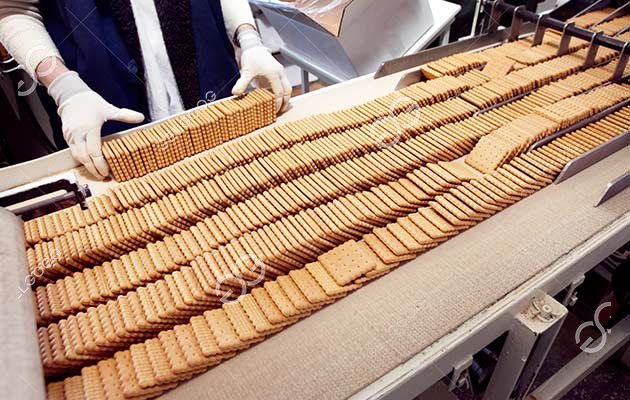How Are Biscuits Processed? - Entire Processing Technology
How are biscuits processed? It from raw materials to final product is a complex process involving multiple production stages. This article will explore the entire technology behind industrial biscuit processing.
1.Ingredients Preparation
The process begins with the preparation of ingredients. Flour is sifted to remove any lumps, and other dry components like sugar, salt, and leavening agents are measured out. For flavored biscuits, additives such as chocolate chips, nuts, or fruit pieces are also prepared.
2.Dough Mixing
In the next stage, the wet ingredients—typically consisting of fats like butter or oils, and sometimes eggs and flavorings—are creamed together. This is then gradually combined with the dry ingredients to form a dough. The mixing must be thorough yet gentle to avoid developing too much gluten, which can make the biscuits tough.
3.Dough Resting
Following the mixing phase, the dough is set aside to rest. This downtime is essential for the biscuit's final texture. During this rest, the gluten in the dough has the chance to relax, and the fats distribute more uniformly throughout the dough. This ensures a uniform baking process and contributes to the biscuits' consistent quality.
4.Sheeting and Cutting
Once the dough has rested, it is fed through a sequence of calibrated rollers that progressively reduce its thickness to a precise level. Subsequently, the uniformly rolled dough is transformed into biscuit shapes using an array of metal cutters, each with a unique pattern that defines the final appearance of the biscuits.

5.Biscuits Baking
Biscuits are baked in large, temperature-controlled ovens. The heat causes the water in the dough to evaporate, the sugars to caramelize, and the leavening agents to create the biscuit's structure. Baking times and temperatures are carefully calibrated to achieve the perfect texture and color.
6.Cooling and Inspection
After emerging from the oven, it's imperative that the biscuits are rapidly cooled to avoid becoming soggy and to solidify for the packaging process. Post-cooling, each biscuit undergoes a thorough quality inspection to confirm adherence to stringent criteria regarding size, form, and visual appeal.
7.Coating and Decorating
For some types of biscuits, such as chocolate-covered or iced varieties, an additional step is added where the biscuits are coated with a layer of chocolate or icing and then decorated with sprinkles or other toppings.
8.Packaging
The final stage is packaging. Biscuits are arranged in their final packaging configuration, either in individual wrappers or bulk boxes, depending on the product's intended market. The packaging not only protects the biscuits but also provides a platform for branding and marketing.
The above content introduces how are biscuits processed. The production of biscuits is a highly technical and automated process that has been refined over many years. Each step is designed to deliver a product that is both delicious and consistent. As technology continues to advance, we can expect the process to become even more efficient, without compromising the quality and taste that consumers have come to expect from their favorite biscuits.
The above content introduces how are biscuits processed. The production of biscuits is a highly technical and automated process that has been refined over many years. Each step is designed to deliver a product that is both delicious and consistent. As technology continues to advance, we can expect the process to become even more efficient, without compromising the quality and taste that consumers have come to expect from their favorite biscuits.
 Email:
lisa@gelgoog.com
Email:
lisa@gelgoog.com Phone:
0086-155-1557-1373
Phone:
0086-155-1557-1373




 Language
Language


